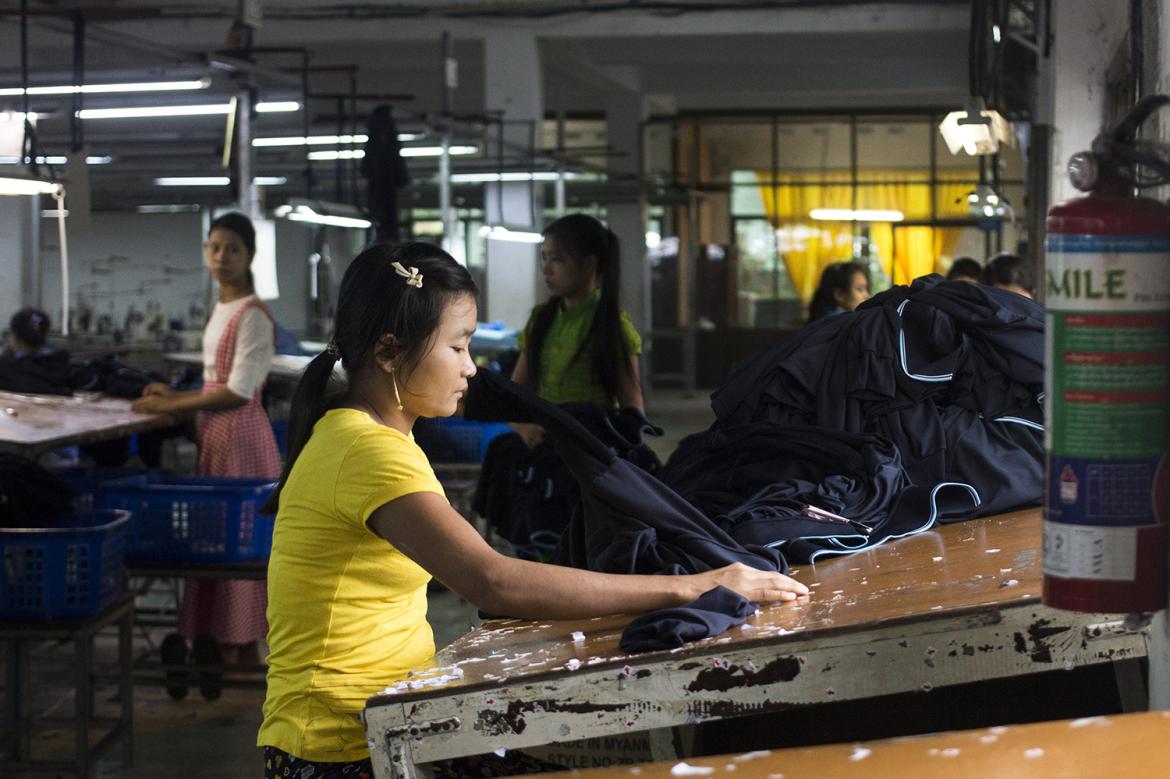Different economic forecasts for Myanmar by the World Bank, the Asian Development Bank, and the ASEAN+3 Macroeconomic Research Office
10 Oct 2018
YANGON— Economic forecasts released in recent weeks by the World Bank, the Asian Development Bank and the ASEAN+3 Macroeconomic Research Office paint a mixed picture of Myanmar’s economic health.
AMRO said the economy was on a gradual recovery path, forecasting growth of 7.4 percent and inflation at around 5 percent in fiscal year 2018-19 in its 2018 Annual Consultation Report on Myanmar that was presented in Yangon on October 5.
In contrast, the World Bank said in its East Asia and Pacific Economic Update last week that growth would weaken to 6.2 percent and inflation would accelerate to 8.5 percent in the same year, amid what it said were rising macroeconomic vulnerabilities.
The ADB’s latest figures, released last month in its updated Asian Development Outlook 2018, strike a balance between the two forecasts. Growth in 2018-19 is likely to come in “slightly lower” than the 7.2 percent forecast earlier this year, it said, while inflation should stabilise at 6 percent.
AMRO’s more positive diagnosis was based on data available up to June 29 and did not factor in, for example, the August 14 decision by the Central Bank of Myanmar to remove a tight trading band on the kyat that temporarily triggered further currency weakness.
It cited expanding public spending and growing exports, and a recovery in agricultural production supported by favourable weather conditions to support the growth forecast. AMRO also anticipated “sustained foreign direct investment inflows, improving investor sentiment and continuing strong growth in garment exports and domestic consumption”, it said.
The ADB said that while agriculture – which accounts for around 30 percent of GDP – has held up well, declining foreign investment has hurt the outlook for the industrial and service sectors of the economy.
In the five months from April to August 2018, the value of merchandise exports rose by 32 percent year-on-year to reach nearly US$7 billion, it said. But in the four months to July, approved foreign direct investment dropped to $830 million, from $3 billion the previous year.
Investor sentiment has been hit by the crisis in Rakhine State, which has also held back growth in international tourist arrivals, the ADB said. As a result, tourism-related services including hotels, restaurants, transportation and communications have underperformed.
Growth in the construction, manufacturing and transport sectors is likely to be adversely impacted by higher costs due to the steep depreciation of the kyat – which traded at K1,564 to the dollar on October 8 – as well as a 33 percent rise in the statutory minimum wage to K4,800 a day and an increase in global fuel prices.
An outside risk to growth in the manufacturing sectors is the potential suspension of trade privileges by the European Union because of alleged Tatmadaw atrocities in Rakhine State. The EU said it is sending a mission to Myanmar to determine whether to begin the withdrawal process, in a move that has been condemned by rights activists.
In 2017, garments comprised 72.2 percent of the €1.56 billion (US$1.8 billion) in exports to Europe, one of the few regions with which Myanmar runs a trade surplus. The possibility that Myanmar’s access to the Everything But Arms programme may be blocked was announced on October 5 and was not factored into any of the recent economic forecasts.
AMRO said that risks to Myanmar’s economic growth emanated mainly from ongoing “ethnic tensions” in Rakhine State.
Other pressures on the economy include uncertainties in the global environment related to trade and energy prices, and vulnerabilities in the financial sector, Dr Lee Jae Young, AMRO’s group head and lead economist told reporters in Yangon.
The ADB and the World Bank echoed these concerns. The World Bank also saw inflation as a concern, particularly as the government is expected to take a more expansionary fiscal stance in the run up to elections in 2020.
“Economic reform momentum may slow leading up to elections in 2020, including in the banking sector where exposure to weakening construction and trade activities may deepen. Vulnerability to natural disasters remains an ever-present risk,” it said.
However all three organisations noted the likely positive effect of fiscal, monetary, financial and foreign exchange reforms. “The progress made in implementing the monetary-targeting framework is commendable and should be continued, together with phasing out the central bank’s direct deficit financing by 2020,” AMRO said.
AMRO and the World Bank both said the Myanmar Sustainable Development Plan, released in August, supported a more positive outlook for medium-term growth.
The World Bank said investment-friendly laws and policy measures to encourage investment, such as the implementation of the new Myanmar Companies Law, ongoing liberalisation and opening of wholesale and retail markets to foreign investment, were likely to “significantly” boost manufacturing and retail services in the medium term.
(Frontier Myanmar: https://frontiermyanmar.net/en/slowing-economy-world-bank-adb-and-amro-release-conflicting-data )











